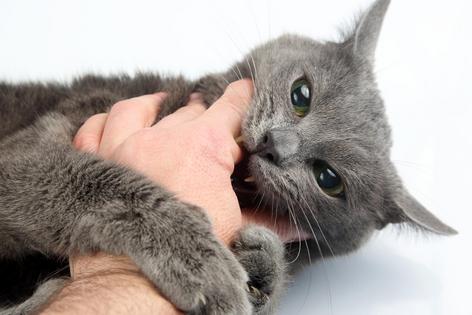My Pet World: Practical tips for managing cats that suddenly bite
Dear Cathy,
I am owned by an adorable five-year-old reverse tuxedo cat named Jasmine. When I adopted her at age three, the shelter warned me she liked to nibble hands. This was never objectionable because she is a small cat with a little mouth, and the nibbling did not damage my hand.
About six months ago, though, her bite acquired more force, and she now occasionally draws blood. I refuse to play with her until she stops chewing on me. She seems to engage in this behavior more when I haven't thrown a few dozen of her chase toys for her. I assume she is bored or angry at me. I leave her alone at this point; I have learned she likes her chill time.
I don't think she is trying to injure me, as she could easily do that with her claws if that were her intention. She is healthy. She has several large cat trees, many cat wands, toys, and cat grass to chew on, and there is a window where she can look out on her kingdom.
I look forward to hearing your thoughts.
— Richard, Allentown, Pennsylvania
Dear Richard,
Cats are highly sensitive to touch and stimuli, and as caretakers, we may unintentionally upset them. Overstimulation in cats often leads to biting, serving as their way of signaling discomfort or displeasure. This behavior is known as petting-induced or overstimulation aggression. Understanding why cats bite allows for the identification and elimination of triggers.
Cat play mirrors hunting behavior, involving stalking, pouncing, and biting. When cats bite their prey, they hold on until it stops moving. To release her grip, remain still until she stops biting, and then calmly walk away. Never use your hands to play with her; instead, use stuffed socks, wire wands, lure toys, or lasers to cater to her natural play instincts.
While it's instinctive to pet cats, respecting their preferences is essential. Learn your cat's tolerance for touch, watching for warning signs such as ears twitching back, dilated pupils, and a rigid, slow-moving tail. By respecting your cat's boundaries, you can avoid sudden bites. Pay attention to your cat's cues and limit petting accordingly. She may not tolerate extensive petting but still may enjoy sitting in your lap.
...continued
(c) 2024 DISTRIBUTED BY TRIBUNE MEDIA SERVICES, INC.










